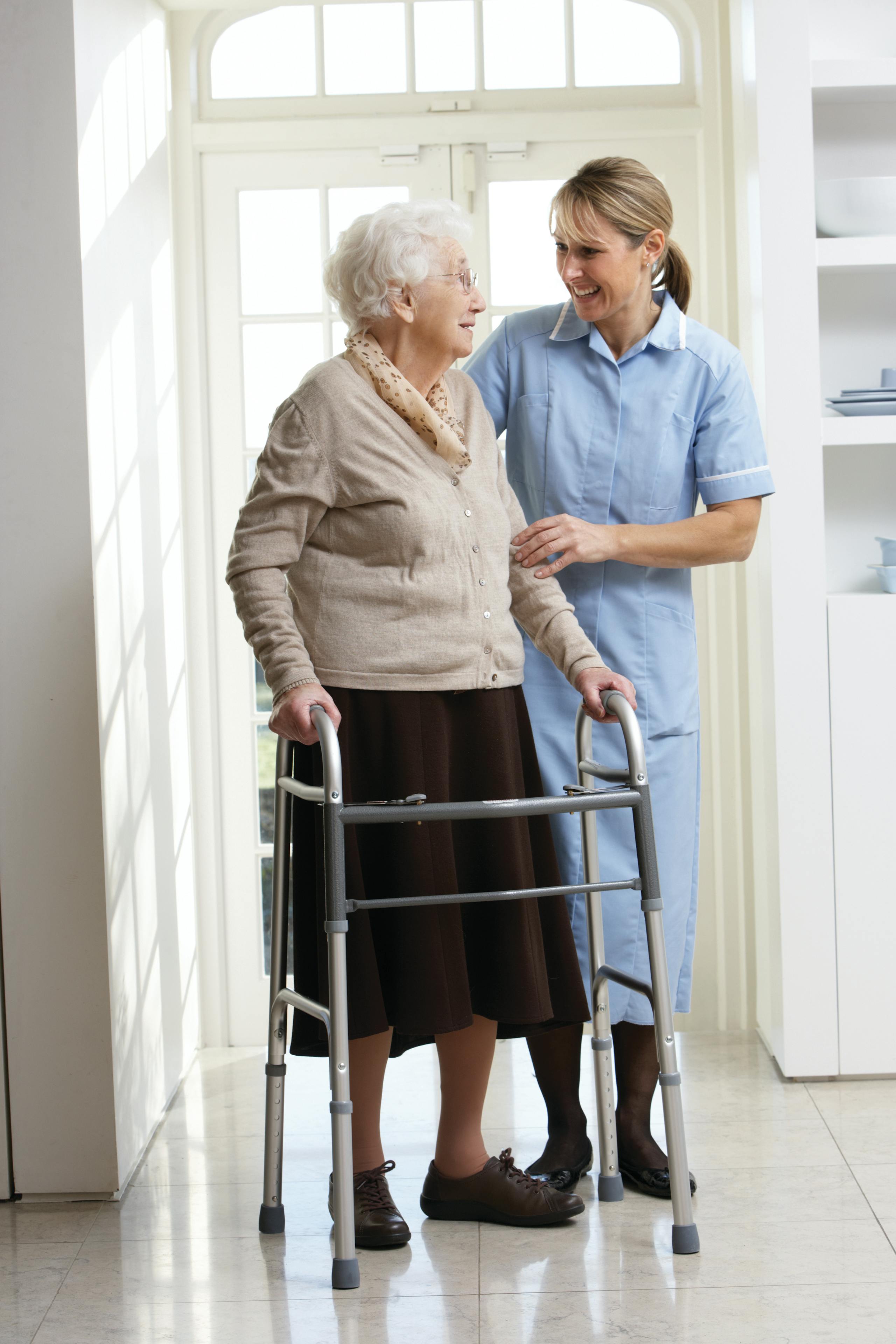Community outreach: a critical unmet need
Many aging Albertans prefer to live at home, in the community, for as long as it is safe to do so. Home care services are an excellent way to bring personal care services to those remaining at home, and home care can often continue successfully for years.
However, as at-home seniors continue to age with reduced mobility, lose the ability to drive, and lack the energy to look after daily activities such as grocery shopping and meal preparation, they can become increasingly isolated and lonely. Some may also have difficulties booking and attending medical appointments on their own, or even recognizing the signs and symptoms of declining health.

Facility-based outreach home care services
CHAA’s facility-based continuing care facilities operate in more than 50% of all municipal districts in Alberta, and are fully qualified to deliver home care services to clients in the surrounding community. Our facility care staff are well versed in the care of more complex residents and can readily bring these skills and services to community-living clients.

Opportunities for direct home care and outreach services to seniors in the community include:
Having an existing care facility provide all home care services to at-home residents within a catchment area
Offering care to populations with distinct language and culture preferences
Delivering meals to housebound seniors
Inviting community-based seniors into the local care facility for meals and social activities
Offering wellness checks to seniors who may not be able to manage an appointment with their family physician
Maintaining connections between a couple separated by different care environments (one in a facility and one at home)
Gradually introducing an at-risk senior to the concept of facility-based care to ease concerns and reservations
Offering overnight stays to seniors from the community so their caregiving partners can have a break or go on vacation.

Facility-based hubs as a community resource
Facilities can readily function as a service and resource hub for home care clients in the community. For example, residents could be invited to the local care facility for showers or baths in a commercial-grade bathing facility. This option dramatically reduces the risk of at-home falls while showering/bathing, and also protects the health of staff providing bathing support.
Facilities are also an excellent clinical and educational resource for home care staff who may not have optimal access to continuing professional education and mentoring. Staff can learn and work alongside their facility-based colleagues for enrichment in areas such as dementia care, palliative and end-of-life care, infection prevention/control, and managing family relations.

Workforce optimization
Conventional home care delivery models can be challenging for staff due to:
Long travel distances to clients’ residences
Time pressures getting from one client’s home to the next
Episodic care scheduling with heavy morning and evening peak workload
Lack of regular interaction with colleagues and work peers.
Continuing care facilities that expand into community home care delivery can alleviate these pressures on staff by managing a larger workforce that is able to work in both facility- and community-based settings. Staff scheduling can be optimized to meet peak workflow times in both the facility and community setting, with staff attached to the facility for mentoring and cross-training.

Moving forward with this innovative concept
There are regulatory, funding and policy considerations that will allow the concept of facility-based hubs to be thoroughly tested and evaluated in Alberta. CHAA operators are collaborating on care/delivery models and advocating for research and innovation support to turn these novel concepts into a new model for care delivery.
Related Content
Learn more about resident quality of life.

Workforce overview
Engaged, compassionate staff are the backbone of the exceptional care delivered across our sites.

Celebrating not-for-profit workers
CHAA’s not-for-profit operators boast the province’s longest-serving workforce and the longest-tenure staff. We’re privileged to work with such stable, loyal, and long-serving teams.Here’s why our partnership with employees is so strong.

The changing workforce profile in continuing care
The pandemic put enormous distress on our workforce, disrupted Alberta’s international labour pool, and created workforce risks unlike anything we’ve ever seen before.
